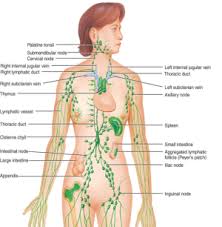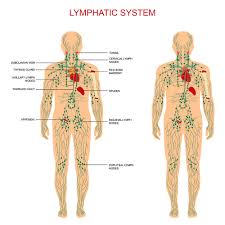"Manual acceleration of lymph drainage is mainly used by practitioners to reduce the size of lymphedema, even though the main function of the lymphatic system is detoxification and disposal of metabolic waste. The compromised quality of the air, water, food, etc., causes significant accumulations of metabolic waste products in our body, some of which are toxic. In many cases, this accumulation of toxins causes us to feel low energy levels, fatigue, mood swings (the clinical symptoms of which are often confused with depression by physicians) fatigue, etc. There is no doubt that lymph drainage is a powerful method for lymphedema reduction, but I also believe we should offer lymph drainage to our clients as a detoxification program. Clients who receive full-body medical massage regularly (for example, on a weekly basis) should be getting a lymph drainage session every fifth treatment. I do not advise therapists to incorporate techniques of full-body massage with lymph drainage techniques, as this can cause severe reactions such as headache, dizziness, nausea, etc. Detoxification causes a significant improvement in the power and function of the immune system. I personally see regular lymph drainage sessions incorporated with full-body stress management massage as no less important than immunization against the flu virus and other infections. Immunizations sometimes do not protect people from contracting the flu, for example. A consistent detoxification program has proven very effective in protecting humans from infections." (Lymph Drainage for Detoxification By Boris Prilutsky)http://www.massagetherapy.com/articles/index.php/article_id/1200/Lymph-Drainage-for-Detoxification-

What is lymphatic massage?
Lymphatic massage, also called lymphatic drainage or manual lymph drainage, is a technique developed in Germany for treatment of lymphedema, an accumulation of fluid that can occur after lymph nodes are removed during surgery, most often a mastectomy for breast cancer. Lymphedema can also be present at birth or develop at puberty or during adulthood. This type, known as primary lymphedema, can affect as many as four limbs and/or other parts of the body. The cause is unknown. Lymphatic drainage massage for conditions other than lymphedema is not medically recommended, although it may be promoted by some therapists.
What conditions is lymphatic massage used for?
Up to 25 percent of breast cancer patients whose surgery includes removal of lymph nodes in the area of the armpit eventually develop lymphedema. The condition can also occur in the legs or other parts of the body if lymph nodes are removed in the course of other types of surgery - for melanoma, colon, prostate or bladder cancer, for example - or are damaged by radiation treatment, infection or trauma. Symptoms include swelling and pain near the site of the removed or damaged lymph nodes. Lymphedema can occur immediately after radiation therapy or surgery, or weeks, months, and even years later.
What should one expect on a visit to a practitioner of lymphatic massage?
A lymphatic massage session for women who develop lymphedema after surgery for breast cancer starts with light massage on the surface of the skin of the neck. The therapist gently rubs, strokes, taps or pushes the skin in directions that follow the structure of the lymphatic system so that accumulated lymph fluid can drain through proper channels. Lymphatic drainage is very gentle, is not painful and doesn’t have a stimulating effect. Each session lasts from 45 to 70 minutes, and therapy usually is performed once a day four or five times a week for two to four weeks. One study showed that the greatest reduction in swelling from lymphedema occurs in the first week of treatment and stabilizes during the second week. (http://www.drweil.com/drw/u/ART03409/Lymphatic-Massage-Therapy.html )



